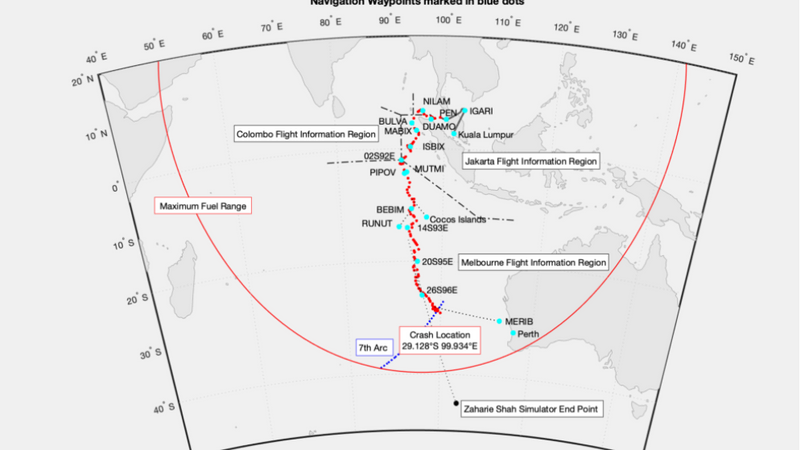Team claims to have found missing Malaysian airline flight MH370 wreckage that disappeared in 2014

A team of scientists have recently published a new report that claims to have identified the location of the missing Malaysian Airlines flight MH370 that disappeared in 2014, international media reported.
British aerospace engineer Richard Godfrey, together with his colleagues Doctor Hannes Coetzee and Professor Simon Maskell published a 232-page document on August 30, detailing their findings about the missing Boeing 777.
Despite numerous failed efforts by international authorities to try and locate the missing plane, the team have developed and used a technology called Weak Signal Propagation Reporter (WSPR) to track MH370.
This technology was developed over the past three years and was used to track flight MH370 in the air.
When an aircraft flies through a WSPR link, it disturbs the signal and that disturbance is stored in a global database which can be analysed.
The WSPR technology managed to locate the plane, which is reportedly 1,560km west of Perth, Australia, which is approximately 29.128°S 99.934°E.

This evidence supports the theory previously stated that flight MH370 did not fly to its intended destination of Beijing but instead made a turn and flew over the Indian Ocean.
In a description of the crash location probability map in the report, measuring the events of March 2014, the authors wrote: “MH370 most likely did not recover from the accelerating descent at -14,773 fpm [feet per minute] at 00:19:37 UTC and crashed at around 00:20:54 UTC.
“If MH370 recovered from the descent, then the Boeing end of the flight simulations without an active pilot indicate a crash at around 00:21:47 UTC. WSPR position indicators show a possible crash with an active pilot at around 00:27:51 UTC.”
“The results of this case study align with the previous analyses by Boeing, Inmarsat and the drift analysis by the University of Western Australia of the MH370 floating debris that has been recovered from around the Indian Ocean,” the research team said.
Flight MH370 took off from Kuala Lumpur Airport in Malaysia on March 8, 2014 and had 227 passengers plus twelve crew members on board.
Hours into the flight, communication systems aboard the plane reportedly shut down and air-traffic controllers lost contact with the plane.
Since the disappearance, there has been a wide array of theories as to what happened to the flight, ranging from it being hijacked to getting shot down by the United States Military.
Fifty-three-year-old Captain Zaharie Ahmad Shah also came under intense scrutiny from authorities, when theories surfaced that Shah may have committed suicide with all passengers and crew on board, livemint.com reported.
Netflix has also released a documentary in which these many theories were discussed but never located the plane.
In the documentary, it was revealed that parts of MH370 were discovered along coastal regions where the Indian Ocean touched, including Mozambique.
IOL previously reported in 2016 that a South African man, Liam Lotter, who was a teenager at the time, found a piece of flight MH370 while on holiday in Mozambique.
Australian authorities said that the piece Lotter found was “almost certainly from the Malaysian Airlines Boeing 777 aircraft”.
The Australian report indicated that the piece Lotter found was the flap track fairing, fairing number seven, from the right wing.
IOL









